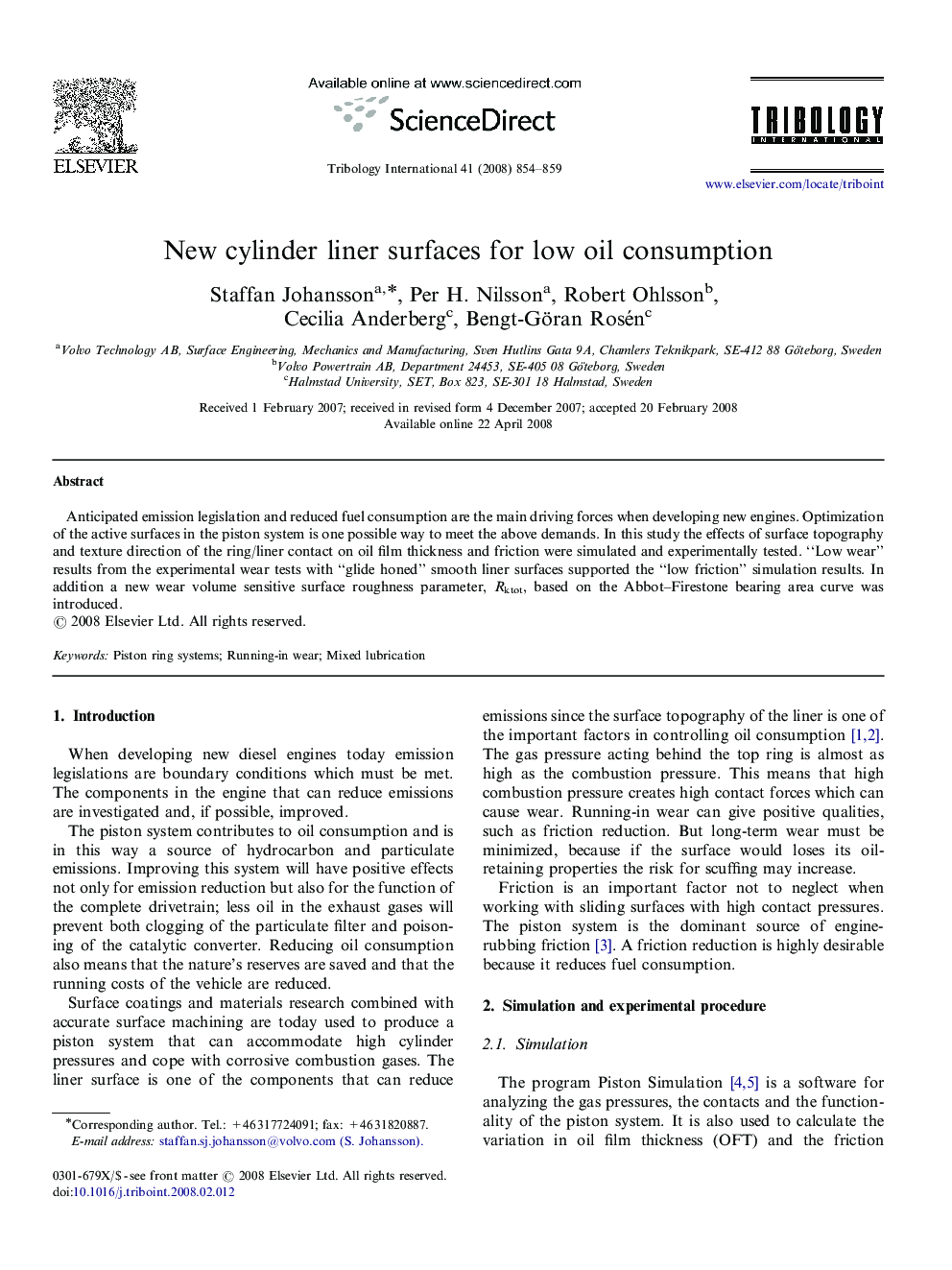| Article ID | Journal | Published Year | Pages | File Type |
|---|---|---|---|---|
| 616036 | Tribology International | 2008 | 6 Pages |
Abstract
Anticipated emission legislation and reduced fuel consumption are the main driving forces when developing new engines. Optimization of the active surfaces in the piston system is one possible way to meet the above demands. In this study the effects of surface topography and texture direction of the ring/liner contact on oil film thickness and friction were simulated and experimentally tested. “Low wear” results from the experimental wear tests with “glide honed” smooth liner surfaces supported the “low friction” simulation results. In addition a new wear volume sensitive surface roughness parameter, Rktot, based on the Abbot-Firestone bearing area curve was introduced.
Keywords
Related Topics
Physical Sciences and Engineering
Chemical Engineering
Colloid and Surface Chemistry
Authors
Staffan Johansson, Per H. Nilsson, Robert Ohlsson, Cecilia Anderberg, Bengt-Göran Rosén,
